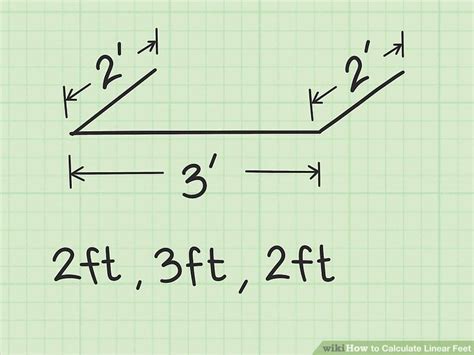How to Calculate Linear Feet: A Simple Guide
Linear feet are a crucial measurement in various applications, from home improvement projects to landscaping. Understanding how to calculate them accurately is essential for ensuring you purchase the correct amount of materials and avoid costly mistakes. This guide provides a straightforward explanation of linear feet calculation, along with practical examples and tips to help you master this essential skill.
What are Linear Feet?
Linear feet simply refer to the length of something in a straight line. It's a one-dimensional measurement, focusing solely on the length and ignoring width or height. Think of it as measuring the length of a straight line along the floor, a wall, or a piece of lumber. One linear foot is equal to 12 inches or one-third of a yard.
How to Calculate Linear Feet
Calculating linear feet is surprisingly easy. The basic formula is:
Linear Feet = Length in Feet
If you already have the length in feet, you're done! No further calculations are needed.
However, often you'll need to convert measurements into feet first. Here's how to handle common scenarios:
1. Measurements in Inches:
If your measurement is in inches, divide the total number of inches by 12 (since there are 12 inches in a foot).
Example: You have a board that measures 72 inches long.
Linear Feet = 72 inches / 12 inches/foot = 6 linear feet
2. Measurements in Yards:
If your measurement is in yards, multiply the total number of yards by 3 (since there are 3 feet in a yard).
Example: You need fencing for an area that is 10 yards long.
Linear Feet = 10 yards * 3 feet/yard = 30 linear feet
3. Measurements with Feet and Inches:
If your measurement includes both feet and inches, convert the inches to feet and add them to the existing feet measurement.
Example: You are installing baseboard that is 15 feet and 6 inches long.
- Convert inches to feet: 6 inches / 12 inches/foot = 0.5 feet
- Add to feet measurement: 15 feet + 0.5 feet = 15.5 linear feet
4. Calculating Linear Feet for Multiple Pieces:
When calculating linear feet for multiple pieces of the same material, add the individual linear feet measurements together.
Example: You have three boards: one at 8 feet, one at 5 feet, and one at 3 feet.
Total Linear Feet = 8 feet + 5 feet + 3 feet = 16 linear feet
Common Mistakes to Avoid
- Confusing linear feet with square feet: Square feet measure area (length x width), while linear feet measure length only. Don't mix them up!
- Forgetting to convert units: Always ensure all your measurements are in the same unit (feet) before calculating linear feet.
- Ignoring fractions: Account for inches and convert them to feet to obtain a more accurate measurement.
Practical Applications of Linear Feet Calculation
Linear feet are essential in many situations, including:
- Home Improvement: Calculating the amount of flooring, baseboards, crown molding, or trim needed.
- Landscaping: Determining the amount of fencing, edging, or sod required.
- Construction: Measuring materials for walls, beams, and other structural elements.
- Sewing and Fabric: Calculating the length of fabric needed for a project.
By mastering the simple techniques outlined in this guide, you can accurately calculate linear feet for your various projects, ensuring you have the right amount of materials and avoiding unnecessary waste or expense. Remember to always double-check your measurements to ensure accuracy.
